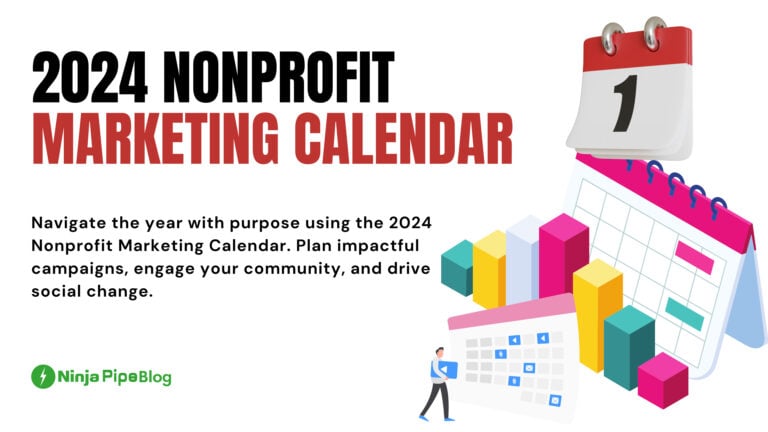Upgrade your business with a compelling blog. Learn the essentials of starting a successful blog, enhancing your online presence, and engaging your audience effectively.
Introduction
In digital marketing, the significance of a blog for businesses cannot be overstated. As we navigate through this guide on how to start a blog for your business, it’s essential to recognize that a blog is not just an online journal; it’s a powerful tool to foster brand growth in today’s increasingly digital marketplace.
Why a Business Blog Matters
Every thriving company, irrespective of its size, embraces the idea of having a blog. Originating as mere weblogs in 1997, blogs have evolved into a necessity for maintaining a competitive edge in diverse industries. Starting a blog is not only easier than perceived but is a strategic move crucial for establishing a robust online presence.
The Multi-Faceted Role of Business Blogs
Beyond the concept of online diaries, modern blogs function as magnets to attract potential customers. Here’s why starting a blog is imperative for your business:
- Enhanced SEO: Integrating relevant keywords into blogs boosts website traffic through effective search engine optimization (SEO). Keywords, integral to SEO, resonate with search engine algorithms, driving traffic to your site.
- Email List Growth: Engaging and informative blogs entice readers, fostering email list growth. A well-crafted blog serves as a gateway to converting leads into sales.
- Social Media Content: Blogs provide rich content for social media platforms, offering valuable links to diversify and enrich your social media feed.
- Brand Awareness: Blogs position your business as an information hub. When users seek answers related to your blog content, they simultaneously learn about your business, initiating the crucial first step in the customer journey.
- Industry Expertise: A comprehensive blog showcases your expertise in your industry, making your company the natural choice for potential customers.
- Relationship Building: Blogs facilitate meaningful conversations, creating a dialogue that transforms attentive readers into loyal, long-term customers.
Blogs: A Long-Term Investment
The beauty of blogs lies in their potential for enduring success. When executed correctly, blogs are evergreen, offering perpetual value akin to a tree that retains its leaves throughout the seasons.
Steps to Launch a Successful Business Blog
Embarking on a business blog journey demands meticulous planning and execution. Before diving into the step-by-step actions outlined below, collaborate with your marketing team and key decision-makers to formulate a formal blog strategy. Begin by creating a document detailing the objectives of your business blog.
1. Define Your Blog’s Purpose and Goals:
- Establish a clear purpose for your blog.
- Craft SMART goals – Specific, Measurable, Attainable, Relevant, and Time-bound.
- Break down overarching goals into practical weekly objectives.
2. Identify Your Target Audience:
- Narrow down your ideal customer profile.
- Tailor your blog content to resonate with specific audience segments.
3. Develop a Content Strategy:
- Leverage insights into your target audience to craft a content strategy.
- Address pain points, interests, common questions, and industry nuances.
4. Set Up Your Business Blog:
- Choose a reliable blogging platform (e.g., WordPress).
- Implement an aesthetically appealing blog theme that aligns with your brand.
- Secure a hosting plan that accommodates your growth.
5. Include Essential Pages:
- Organize blog topics within different pages for enhanced readability.
- Create a seamless user experience by categorizing content.
6. Create a Content Calendar and Stay Consistent:
- Develop an editorial calendar outlining blog post ideas, authors, due dates, and keywords.
- Adhere to a consistent posting schedule to build reader expectations.
7. Encourage Interaction and Feedback:
- Foster engagement by soliciting feedback from customers and readers.
- Utilize surveys, social media, and email outreach to gather valuable insights.
8. Demonstrate Your Expertise:
- Position yourself as an industry expert.
- Address common questions and provide step-by-step guides related to your products or services.
9. Optimize Your Blog for Search Engines:
- Conduct keyword research to integrate relevant keywords into titles and content.
- Leverage SEO tools to enhance discoverability.
10. Promote Your Blog Content:
- Share blog links across social media channels.
- Utilize email lists to notify subscribers of new content.
- Celebrate each publication to underscore the significance of your blog.
11. Track and Analyze Your Blog’s Performance:
- Set measurable metrics aligned with initial goals.
- Utilize tools like Google Analytics to monitor visitor interaction and journey phases.
Planning and Crafting Blog Posts
To ensure sustained success, meticulous planning of blog posts is paramount:
1. Brainstorm and Outline Potential Blog Topics:
- Conduct collaborative brainstorming sessions to generate diverse ideas.
- Ask team members to contribute 10 ideas each for customer-centric topics.
2. Use Content Pillars and Categories for Organization:
- Structure your blog with content pillars and designated categories.
- Enhance user experience by providing organized, searchable content.
3. Consider Evergreen and Trending Content Ideas:
- Blend trending topics with evergreen content for a well-rounded blog.
- Explore subjects that maintain relevance throughout the year.
4. Monitor Industry Trends:
- Stay abreast of industry trends and incorporate timely articles.
- Showcase your business as a frontrunner in adapting to new developments.
5. Engage with Your Audience for Feedback and Suggestions:
- Actively seek feedback through surveys and social media.
- Dynamically adapt your content strategy based on audience input.
Utilizing Curation in a Blog
Diversify your blog’s voice and content by embracing curation:
1. Curate and Share Relevant Industry News and Insights:
- Compile valuable links to industry news for a comprehensive roundup.
- Save readers time by presenting curated content within your blog.
2. Credit and Collaborate with Other Experts:
- Collaborate with industry experts to offer guest blog posts.
- Clearly credit authors and provide links for readers to explore more.
3. Provide a Unique Perspective and Analysis:
- Add value to curated content by offering your unique perspective.
- Strengthen relationships by contributing insightful analyses.
Leveraging a Business Blog for Maximum Impact
In conclusion, a blog serves as a potent asset in a business’s content marketing arsenal. By meticulously planning the blog’s structure and content calendar, businesses can lay the foundation for enduring success. As you embark on the journey of starting a blog for your business, explore existing blogs, analyze their organization, and gather inspiration from diverse sources. Schedule a collaborative meeting, initiate brainstorming, and usher in a new era of engaging and impactful content for your audience.








Leave a Comment